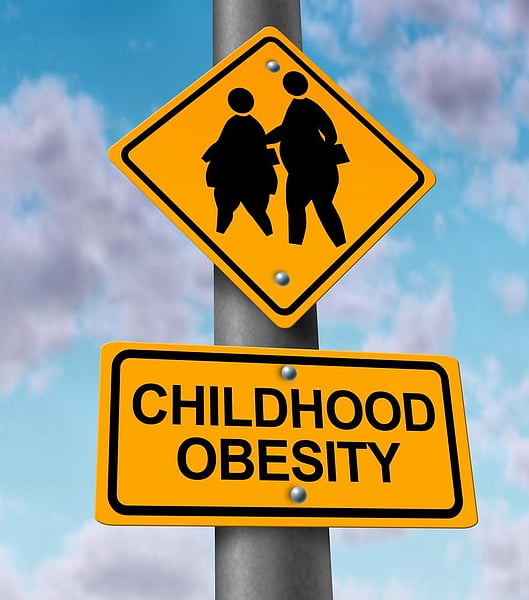Childhood Obesity: Guidelines for Families

Children and teens in America are three times more likely to be overweight than they were 30 years ago. According to the National Center for Health Statistics, about one out of five U.S. children is now obese. While there are a few mysteries and unanswered questions behind this epidemic, some of the causes are painfully clear. Young people in the country may be the least active generation in history, and they're also world-class consumers of high-fat, high-calorie junk food.
The extra weight has set off a wave of obesity-related conditions in children and teens, including asthma, high cholesterol, and high blood pressure. There has even been an upsurge in cases of childhood type 2 diabetes, an illness that used to be extremely rare before middle age. Overweight children are also vulnerable to depression and low self-esteem. Even though more kids than ever are on the heavy side, the stigma remains.
Obesity is a serious, long-lasting health problem that young people can't be expected to tackle on their own. It has to be a family effort.
Is my child overweight?
Doctors use the Body Mass Index (BMI) to determine if a child (or adult) is overweight, underweight, or normal weight. The formula for BMI is a little complicated, but it's easy to find a BMI calculator online. The NIH has one here: http://www.nhlbisupport.com/bmi/. If you know your child's height and weight, you can just enter the numbers and instantly get your result.
The expected BMI for children changes with age, and it's different for boys and girls. To see how your child measures up, check where he or she lands on the CDC's growth charts. The chart for boys is here: http://www.cdc.gov/growthcharts/data/set1clinical/cj41l023.pdf, and the chart for girls is here: http://www.cdc.gov/growthcharts/data/set1clinical/cj41l024.pdf. Children and teenagers between the 85th and 95th percentile BMI are generally considered overweight; those at or above the 95th percentile are generally considered obese.
My child is overweight. What should we do?
It's going to take a group effort to help your child reach a healthier weight and a healthier life. Your family or doctor can help by checking for weight-related health problems such as high blood pressure and or prediabetes. Many hospitals offer weight loss programs specifically aimed at children and teens. But no matter how much help you get from the outside, much of the work will have to happen at home.
Here are some tips from federal health agencies to help your child stay active:
- Make time for the entire family to participate in activities that everyone enjoys, perhaps walking, bicycling, or swimming.
- Plan active family outings. A hike out of town would be a great way to spend time together.
- Give kids active chores like raking leaves or washing the car.
- Enroll your child in a fun class or activity, perhaps swimming lessons, dance lessons, or flag football.
- Talk with your child about the possibility of joining a sports team at school. It doesn't have to be a varsity team; intramural sports can be plenty active, too.
- Limit your child's screen time -- TV, video, and recreational time on the computer -- to no more than two hours a day.
Here are some tips to encourage healthy eating:
- Make sure everyone in the family makes a commitment to eat more fruits, vegetables, and whole grains.
- When possible, prepare foods together.
- Make a commitment to eat at home more often.
- Eat meals together at the dinner table at a regular time. Studies show that kids eat better at sit-down family meals. As a bonus, kids who have a lot of meals with their families tend to have better communication skills and get better grades. Encourage everyone to turn their screens off and talk.
- Go easy on portion sizes, both at home and in restaurants.
- Serve tasty but nutritious snacks, such as fruits, vegetables, yogurt, and low-fat popcorn.
- Don't force your child to eat or tell him to clean up his plate if he's not hungry.
- Avoid using food as a reward or withholding it as punishment.
- Pay attention to what your child eats at school. If they cafeteria is serving junk food, you'd be better off packing a nutritious lunch at home.
References
Centers for Disease Control. Overweight and Obesity.http://www.cdc.gov/nccdphp/dnpa/obesity/index.htm
National Institutes of Health. Families finding the balance. http://www.nhlbi.nih.gov/health/public/heart/obesity/wecan_mats/parent_hb_en.pdf
American Academy of Pediatrics. About childhood obesity. http://www.aap.org/obesity/about.html
Barlow, Sarah E., MD, MPH, and Dietz, William H. MD, PhD. Obesity Evaluation and Treatment: Expert Committee Recommendations. www.pediatrics.org/cgi/content/full/102/3/e29
Krebs NF, Jacobson MS, American Academy of Pediatrics Committee on Nutrition. Prevention of pediatric overweight and obesity. Pediatrics, Vol. 112(2):424-30. National Guidelines Clearinghouse
Centers for Disease Control. About BMI for Children and Teens. http://www.cdc.gov/nccdphp/dnpa/healthyweight/assessing/bmi/childrens_BMI/about_childrens_BMI.htm
Related Posts
Binge Eating Disorder Looks Different in Brains of Boys and Girls
MONDAY, Nov. 14, 2022 (HealthDay News) -- The brains of girls and boys who have...
CVS, Walgreens Announce $10 Billion Opioid Settlements
WEDNESDAY, Nov. 2, 2022 (HealthDay News) -- Years of litigation over the opioid...
Dirty Air Could Raise Breast Cancer Risk
WEDNESDAY, Sept. 13, 2023 (HealthDay News) -- Air pollution has long been known...
‘Unbearable’: 3 Patients Tell of Monkeypox Ordeal
MONDAY, Aug. 1, 2022 (HealthDay News) -- What do a small business owner in the...
